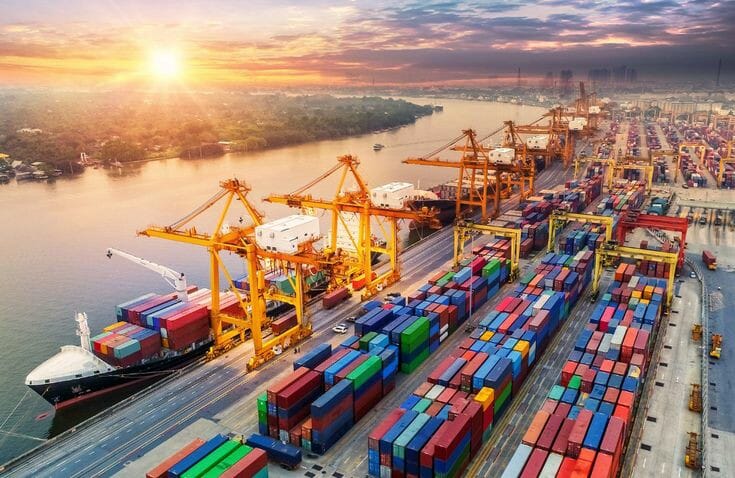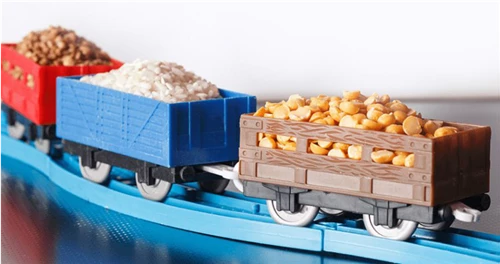
Foreign trade is one of the key topics in the economic development of any country.
This sector serves as a source of foreign currency income for investors and facilitates the adoption of modern technologies to enhance the country's productive economic capacity. International trade not only generates profits and benefits, such as contributing to the Gross Domestic Product (GDP), but also acts as a critical source of foreign currency. By increasing exports, which require higher production levels, economies can benefit from the advantages and profitability of economies of scale. Participation in international markets through the production and export of goods in which a country has a comparative advantage can lead to structural transformation.
Given the heavy reliance of Iran’s economy on oil revenues, any fluctuation in oil prices results in a deficit in the country’s balance of payments. Therefore, promoting non-oil exports is essential. To reduce dependence on oil-based revenues, a focus on agricultural products is recommended, as they are a vital source of foreign exchange and have an undeniable impact on the economy and relative growth. Consequently, the expansion of agricultural exports could provide a strong foundation for Iran’s presence in global markets. Emphasizing the development and trade of agricultural products is a prerequisite for economic development.
The Role of Agriculture in Economic Development
The added value of the agricultural sector has a significant impact on increasing exports of agricultural products in both the short and long term. Enhancing the productivity of agricultural production factors and utilizing the potential capacities of this sector can improve export levels. Policies aimed at accelerating agricultural growth can improve the value of agricultural exports. Moreover, agriculture plays a multifaceted role by providing employment, ensuring food security for the population, and supplying raw materials to processing industries. Therefore, focusing on this sector plays a vital role in enhancing welfare and improving nutritional standards.
The agricultural sector also supplies intermediary goods to other sectors while relying less on intermediary products from other sectors. Agriculture in Iran benefits from key advantages such as diverse climates, varied land resources, and abundant labor. Additionally, it is less dependent on complex technological knowledge. Studies on the factors affecting the supply and demand of agricultural products highlight variables such as net exports, income levels of countries importing Iranian agricultural products, real exchange rates, and lagged export variables as significant contributors.
Strategies to Enhance Agricultural Exports
- Increasing Production
Production growth is a critical factor influencing export supply. Planned investments in agriculture lead to increased production, which subsequently raises export prices. This motivates domestic producers to export more products and achieve higher income levels. Export price increases can be achieved through improved health standards, enhanced packaging suitable for export markets, aligning with consumer preferences, effective marketing strategies, and selecting appropriate crop varieties. - Improving Standards and Quality
Adhering to international standards and improving product quality can expand market access and boost foreign exchange earnings. However, challenges such as inadequate packaging, improper grading of export products, and failure to meet quality standards or align with foreign consumer preferences remain significant obstacles for Iran. Despite these issues, some progress has been made in satisfying consumer demands for certain products. - Diversifying Agricultural Exports
Diversifying and increasing the production of agricultural products not only contributes to economic growth but also plays a central role in the socio-economic development of the country. By increasing rural incomes, agricultural exports directly aid rural welfare and poverty reduction. The primary focus should be on improving production and quality by providing the necessary inputs to producers. Investment in production and diversifying export products can enhance Iran’s non-oil export capabilities on the international economic stage. - Developing Infrastructure and Long-Term Policies
To prevent fluctuations in agricultural exports, a clear strategy should be designed, and long-term policies should be implemented. This would increase export prices and expand Iran’s share in global markets. Recommendations to overcome barriers and improve export conditions include:- Implementing exchange rate stabilization policies, as exchange rate stability is crucial for consistent agricultural exports. Transparent information on future exchange rate trends can help exporters increase revenues and maintain Iran's position in global markets.
- Gradual reduction of tariffs on imported industrial products to enhance the competitiveness of domestic goods. Revising guaranteed prices for agricultural products and aligning them with inflation rates.
- Strengthening the connection between agriculture and industry as part of the industrial development strategy. Due to the high levels of waste in agricultural products, investments in this area are strongly recommended.
- Developing export infrastructure and implementing macroeconomic policies such as exchange rate and interest rate stabilization, as well as effective monetary and fiscal policies to boost GDP growth.
Recommendations for Sustainable Growth
Investing in agriculture and enhancing agricultural production is recommended for increasing GDP. The success of investments in agricultural exports depends on stable laws and regulations. Frequent, inconsistent, or contradictory policy decisions regarding export regulations can disrupt the sector. Policies aimed at accelerating agricultural growth will improve the value of exports.
Given the impact of export price indices on export supply, it is recommended that the government closely monitor production services and agricultural product pricing to control inflation in both the short and long term. By implementing such policies, the necessary infrastructure for mechanizing agriculture can be developed. Increasing technical knowledge and providing infrastructural facilities will enhance the productive capacity of agriculture in both the short and long term. This, in turn, will foster modern production methods and the supply of diverse goods, leading to increased exports and an improved trade balance for the country.
